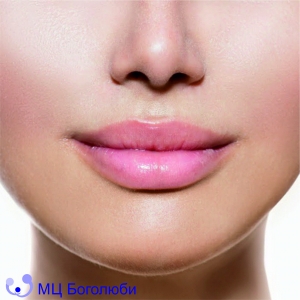The new fashionable word "bulhorn" is translated as "bull horns", however, in fact, it has nothing to do with real horns. This is the name of one of the most popular plastic surgeries for lip augmentation today. It turns out that you can give them a seductive shape not only with the help of fillers. What are the advantages of this type of cheiloplasty, who is it suitable for and who is not? This will be discussed in this article.
Why bullhorn?
This name is explained by an incision under the nose, in a fold, which is shaped like bull horns. The essence of the operation is that the tissues of the lip are excised, and the tension at the base of the nose slightly raises the upper lip, slightly twisting it. Thus, it turns out to achieve a natural effect of plump lips. Bullhorn can be an auxiliary technique in the reconstruction of the cleft palate or cleft lip.
The primary indication for this operation is age-related changes. Over the years, the skin loses its elasticity, the distance between the nose and the lip becomes larger, and the lip itself becomes thinner. In this case, the hopes for fillers are not justified. The injectable drug is simply not able to lift flabby tissue, volume is added, but beauty is not. Bulhorn is a way out of the situation.
In addition, bullhorn solves problems:
• ptosis of the upper lip;
• lip asymmetry;
• insufficient volume of the upper lip;
• consequences of congenital anomalies or injuries;
• individual features of the face.
The unspoken aesthetic standard says that the distance between the lip and nose should not exceed one and a half centimeters. It is difficult to achieve this with fillers alone. Many of today's "stars" have taken advantage of Operation Bullhorn, and their example is inspiring.
Benefits and Risks of Bullhorn
First of all, it is the naturalness of the result, no "duck" lips. A significant plus is that the intervention requires very little time - only 20 minutes under local anesthesia. The recovery period is short. In three to four days, swelling and bruising disappear, and the result can be assessed according to merit in two weeks.
Plastic surgeons of MC "Bogolyuby" successfully practice this type of cheiloplasty, and not only. Before the operation, a series of anatomical measurements is mandatory to calculate the most suitable option. This is an important stage, since, unlike fillers, the result of the operation is almost impossible to correct. The patient should know this when deciding to lie under the scalpel.
The risk of bullhorn surgery is a gingival smile, it is also called gingiform. Therefore, you should trust your face only to highly qualified, experienced professionals. Before the intervention, Bogolyuby Medical Center will definitely offer you options for solving the problem and answer all your questions. Our surgeons always take into account the wishes of the patient and inform about the limits of the possible, which are forbidden to be violated in order to avoid irreversible consequences.
As a result of the operation, the proportions of the face become balanced, aesthetic defects are eliminated, and a visual effect of rejuvenation is achieved.
Contraindications for cheiloplasty
Like any surgical intervention, bullhorn surgery has a number of contraindications. These include: pregnancy and lactation, the distance from the tip of the nose to the upper lip is less than one and a half centimeters, exacerbation of herpes, malignant tumors, poor blood clotting, diseases of the cardiovascular system, liver and kidney failure, diabetes mellitus, a tendency to keloid or hypertrophic scars.
From an aesthetic point of view, it is not necessary to resort to surgery for patients with a gingival smile and owners of an upturned nose. Recovery period
The surgeon removes the stitches on the 6th day after the intervention. Full recovery takes 14 days. During this period, you can not visit the bath and sauna, actively engage in sports. Since the procedure is low-traumatic, it does not cause significant inconvenience. There may be numbness and slight discomfort in the area of intervention. The small bullhorn stitch becomes invisible after about two months.
















